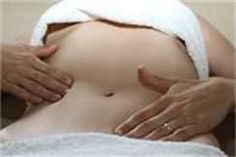Therapeutic Myofascial Treatment
What is Therapeutic Myofascial Massage?
This treatment is based on the best of my particular techniques that I have learned over the years of my practise. It includes Myofascial techniques (originally based on Rolfing), Shiatsu and remedial approaches as well.
- First, the body is assessed with light strokes on the spine and ribs to determine what is happening in the person’s body.
- This will determine the best combination of techniques, right pressure and positions (i.e. prone, supine and sides) of the person to work on. A longer treatment (90 minutes) allows for a greater body of work to be applied and is generally a better outcome.
- Long strokes and gentle stretches are also applied to calm and reset the body after working specific areas.
- You can expect to feel looser, stretched and taller after your initial treatment. Successive treatments will be focused on your current and specific needs.
- Myofascial treatment in particular, is a focused manual pressure that stretches over restricted movement in the tough membranes that wrap, connect and support your muscles, leading indirectly to reduced pain.
- Particular stretches, as in Shiatsu work the all important hips and lower back areas (lumbar-pelvic region) – critical for overall posture, as is the shoulder and neck axis.
- Long strokes are used to soothe down the body and activate the parasympathetic (nervous) system as an act of restoration.
Massage has three stages
1. The warm-up. Letting the client feel comfortable to your touch and pressure. Checking in with them that they are okay under your care.
2. The specific part of the treatment. Working their body with the right touch and manual approach that fits the client’s need and understanding of that need.
3. The integration. The client needs time to allow all of this therapeutic touch to settle in their body, before they get up from the table. Sometimes, a roll-down stretch integrates the front and the back of the body more so.Or a gentle cradling of the sacrum or occiput helps the integration of body and mind settle some more. Therapeutic massage has a beginning, a middle and and an ending that needs to be as considered as well as the other parts.
After that, a follow-up is always recommended to deepen your treatment or take your body that next step further into more release and integration.
The other part of treatment beyond the clinical space is doing your homework of exercises to improve your well-being and to manage your issue. We like our clients to know more about their bodies and especially how to take care of them and make them more fun to be in.

Claire has a rare combination of natural intuition and extensive skill and knowledge in the healing arts. I at once felt relaxed in her presence and very shortly into my first treatment I knew I was in good hands. Claire knows which method is the most suitable for each situation and freely combines all her training into a seamless healing experience.
I feel like every session with her is a gift, and I recommend her to anyone confidently knowing that she will be able to assess your needs and work with you to reach a place of healing and freedom.
I find Claire’s massages wonderful. I’ve walked in with sore stiff hips and walked out relaxed and next day walking without stiffness or pain.
I love the range of modalities that Claire uses and my body responds so well to her massages. I particularly like how respectful Claire is –
she listens and if you ask her to be careful around a particular area she is or if you ask her to not massage on a particular spot eg after an operation,
she avoids that particular spot. I think Claire is highly intuitive as she seems to know exactly where my body needs a massage and which modality my body responds to best.
The Healing Practice
Albert Street, Forest Lodge, Sydney NSW 2037
Contact The Healing Practice Learn how we can help you or Call Claire on 0438 216 351.
